I'd like to address some of those suggestions now and let you know how things stand currently and how we can move forward and what the obstacles are.
Reorienting the altar. Not going to happen with the current climate and leadership in the local Church, the diocese and the parish. It would create a riot. Battles have to be chosen carefully and there's really no point in getting slaughtered (which is what is going to happen if we proposed such a thing.)
Candlesticks on the altar. When we're not celebrating some major (and I mean major, as in Easter, Christmas, etc) feast, we use these funny candles in a pineapple shaped bottle. So... Basically, during feast days, it already a tough battle to get the good ones out on the floor. And the antependium has actually deteriorated, as you can see in the photo below. It's now an all white affair.

The nice antependiums and ambo fall.
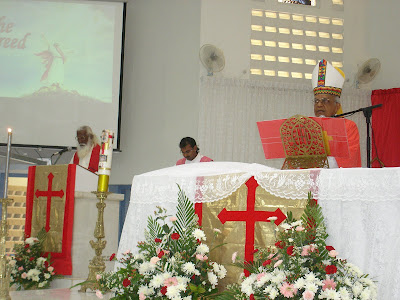
Concelebration. Our PP is not a fan.
Regarding the priest facing the crucifix, there's a crucifix on the altar. And facing the priest is the large wooded crucifix which we use for the veneration. It's placed in the belfry, facing him. I need a photo of that.
Here are some of Justin's suggestions.

A half way measure to a full blown Benedictine Altar arrangement. We used to have the processional cross up there, but it faced the people. It was later removed to avoid a confusion of signs as we already have a huge and prominent altar cross.
 The old processional crucifix on the altar
The old processional crucifix on the altar
The current processional crosses don't have stands. Besides, the priest can see the small crucifix on the altar itself or the other huge one in front of him in the belfry. (Need to get a photo of that, but it's the same cross we used for the Veneration on Good Friday)
Raising the processional torches. That's a great idea. Thanks. We'll try to propose that. But some logistical problems in the form of short servers might crop up!
Uniformity in dress for ministers (processional canopy bearers). The people carrying out this ministry happen to be members of the society of St. Vincent de Paul. So they wear their distinctive uniforms. Those not in uniform were those roped in to help the mostly elderly members of the society so the statue isn't dropped. The helpers were in white shirts and black pants.
Examples of servers. Their hands are always joined in the 'praying' postition with palms together when not in use. They do bow the head at the tradtional places - such as when the schola sings the Gloria Patri, at the mention of the Holy Name of Jesus, of the BVM, and of the Saint of the Day. A profound bow of course should be done by the servers at the Incarnatus section in the Creed. (Done!)
The other gestures, while commendable (and is something I and some others do personally) unfortunately are not in the rubrics and doing so would get us all in trouble by giving ammo to the people to shoot us with. I must say however, that the servers' examples are undone by the priests' non-example (as above) and the refusal to include the rubrics in the projected slides.
Positioning of the altar servers - I wondered if maybe you could position them such that the servers do not necessarily have to flank the priest (and consequently face the congregation) at all. The current placement where some servers flank the priest and actually face the congregation adopts the posture of concelebrants/deacons. Perhaps all of the servers could stand at the sides and only approach the priest when necessary. This would be more in keeping with an 'in choir' arrangement, and further would prepare the way for when the priest offers Mass ad orientem (jokes!). - I will pass on this suggestion although in the current climate, this might be perceived as an effort by the servers to distance themselves from the priest and appear confrontational =)
Do you use the communion plate/paten in your parish? Yup.

Just a thought - I don't think they're that difficult and would certain enhance the solemnity. On the subject of communion, the torch bearers could use their torches and flank the Blessed Sacrament when the priest descends from the sanctuary and one stand on each side of the priest in the distribution of communion, or alternatively, they could remain in the position they adopt during the Canon. - Unfortunately, we have 12 EXTRA-ordinary ministers of Holy Communion, so the servers are stretched with communion plate duties and there are none to spare. BTW, we have a server limit restriction of 7 per Mass as imposed by the PP.
The altar servers (and again, this could already be done) could make a genuflection before reception of communion. Please read this for further clarification. A very touchy and sore subject for some of us here.
The suggestions above were from Justin and are very very much appreciated!!! Thanks for taking the trouble!
What follows are suggestion from Deejay from the Philippines. Thanks!!


 Why do you use canopies for your marian procession? I don't think we practice it here. i guess it would be better if the people can have a clearer view of the image--that is without the canopy. - Our previous practice was processing the image without a canopy. But we decided that greater solemnity was evident with a beautifully designed canopy which enhanced the environment of the procession. Although most statues are processed without, as in Fatima and Lourdes, it's not without precedent. Anyway, as the photos below show, it's still pretty visible, I think.
Why do you use canopies for your marian procession? I don't think we practice it here. i guess it would be better if the people can have a clearer view of the image--that is without the canopy. - Our previous practice was processing the image without a canopy. But we decided that greater solemnity was evident with a beautifully designed canopy which enhanced the environment of the procession. Although most statues are processed without, as in Fatima and Lourdes, it's not without precedent. Anyway, as the photos below show, it's still pretty visible, I think.





 Regarding the photo about the celebration of he Lord's passion (the photo under surplice/cassock combo) i can say that form 1 and form 2 of the showing of the cross was used. and i think that is not allowed. (see the roman missal)
Regarding the photo about the celebration of he Lord's passion (the photo under surplice/cassock combo) i can say that form 1 and form 2 of the showing of the cross was used. and i think that is not allowed. (see the roman missal)You're right. It's a combination of the First (unveiling at the sanctuary) and 2nd (procession from the back) forms of showing the cross. However, in our defence, it's been done that way since time immemorial [ie as far back as I can remember =)]. Anyway, this one aspect falls under the authority of the parish priest as no priest (we've had 10 in the past 10 years) have chosen to do otherwise. Although it's venerable usage could grant it the status of a local tradition, it does not strictly contradict the rubrics because the rubrics are silent on this when detailing form 2. There's just no mention of the unveiling.
3. i suggest that you have a master of ceremonies (as suggested by the GIRM 2002 (no. 106)and caeremoniale episcoporum (no. 34-36) who is knowleagable of the liturgy.
We used to have one, but he wasn't that knowledgeable and the current PP abolished the role. Unfortunately, a new appointment would fall under the jurisdiction of the PP and is his prerogative. I assure you that we do know what we're doing and we do give the correct advice, but it's subject to the PP's approval and sometimes our advice is not always taken. Further 'suggestion' from our part is branded being rigid =( So, in the current climate, having an MC would do no good because there's no point having one if no one listens anyway.
4. i suggest you complete your liturgical books so you won't get lost if you need something. if you want, i can give you a check list for that.
Currently, my liturgical library includes the following volumes pertinent to the modern Roman Rite.
Ceremonies of the Modern Roman Rite
Ceremonies of the Liturgical Year
The Rites of the Catholic Church Vols I and II (which cover all the rites and provides the text for such ceremonies as the celebration of the Sacraments, Abbatial Blessings, Dedication of Churches, Ordinations and the like)
The Book of Blessings (The Rituale as published by the USCCB)
The Ceremonial of Bishops
How Not to Say Mass (lousy book)
Liturgical Question Box: Answers to Common Questions About the Modern Liturgy
The General Instruction of the Roman Missal, 1969-2002: A Commentary
The Ministry of Servers
Order for the Solemn Exposition of the Holy Eucharist
Order of Christian Funerals
Fortesque's The Ceremonies of the Roman Rite Described
As reference:
The Spirit of the Liturgy (both Cardinal Ratzinger's and Romano Guardini's)
Fr. Anscar Chupungco OSB's series:
Handbook for Liturgical Studies: Introduction to the Liturgy
Handbook for Liturgical Studies: Liturgical Time and Space
Handbook for Liturgical Studies: The Eucharist
Handbook for Liturgical Studies: Fundamental Liturgy
Handbook for Liturgical Studies: Sacraments and Sacramentals
Charles E Miller CM's series
Volume I: Foundations of Vatican II Liturgy
Volume II: The Celebration of the Eucharist
Volume III: Sacraments and Other Matters Liturgical
Jungmann's The Mass Of The Roman Rite : Its Origins and Development
Alcuin Reid's The Organic Development of the Liturgy
Uwe Lang's Turning Towards the Lord
Aidan Nichols's Looking at the Liturgy
Michael Davies' The Catholic Sanctuary and the Second Vatican Council
Cardinal Ratzinger's Feast of Faith, A New Song for the Lord and God Is Near Us
Klaus Gamber's Reform of the Roman Liturgy: Its Problems and Background
Responses to 101 Questions on the Mass
If you have any other suggestions on how to improve my library, do please drop a comment. Many thanks for taking the time to review this!
i suggest you have a general assembly of liturical ministries of your parish (clergy, servers, lectors, etc.) to synchronize your liturgy.
We have what is known as the Liturgical Committee which meets once a month. This groups representatives from the various liturgical ministries such as the servers, sacristan, lectors, commentators, EHMC's and the Parish Priest. However, these people are not experts on the liturgy. And in reality, what the parish priest says often goes, despite what the committee might think, but yes, we have an 'assembly' of the various people connected with the liturgy.
Thanks to all of you for your suggestions. Do keep them coming if there's anything you want to add. Thanks again.
![[Unam Sanctam]](https://blogger.googleusercontent.com/img/b/R29vZ2xl/AVvXsEiymQ2adTjpZ1ABhPBbBBquiPCxeQrc4Jy_97vOikT0wGQeJleriiXQy6ebnb0jrYe-TfvcK77txStB4aIwVAdD41ZdMkVfNtFGC0JX6LBV9B8mfeRZaIAM7Sj-011ag3DiKQzv/s1600/headerdivinemercy.jpg)















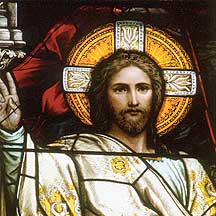
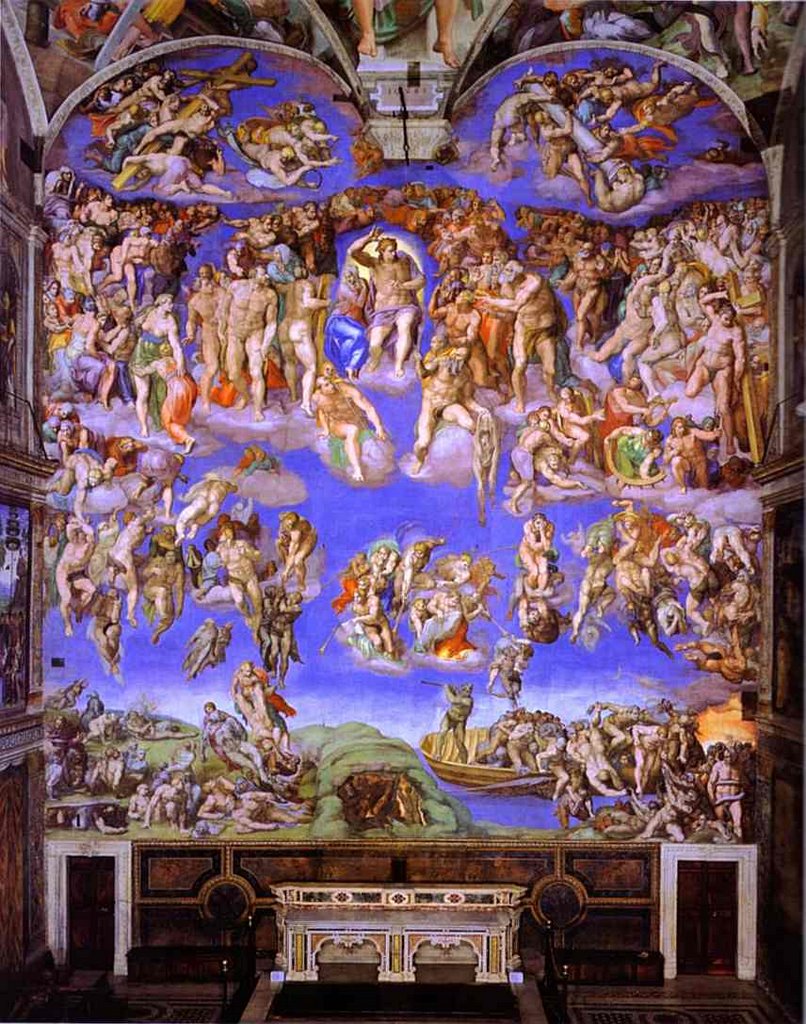






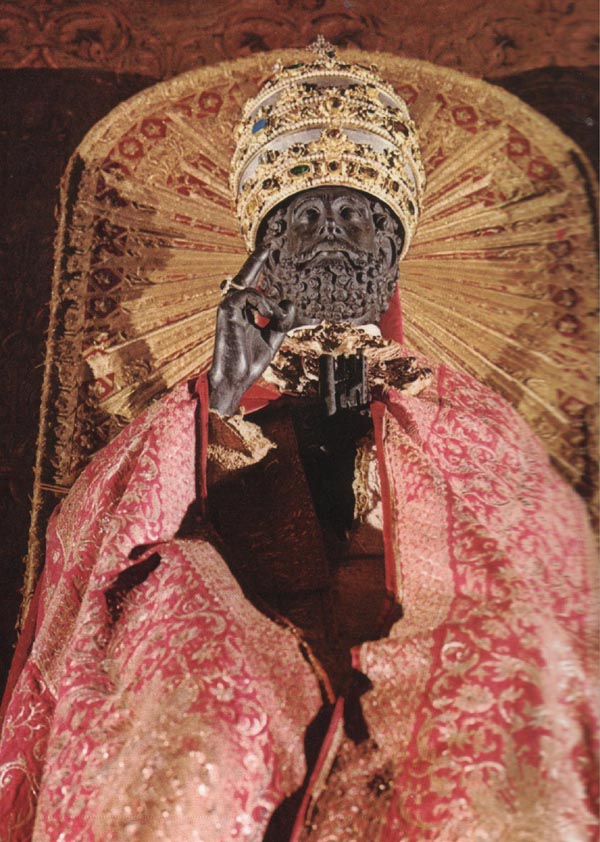
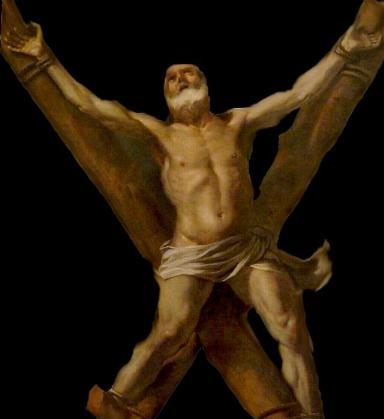




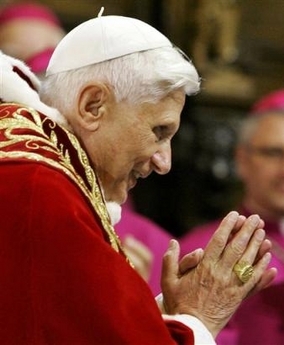






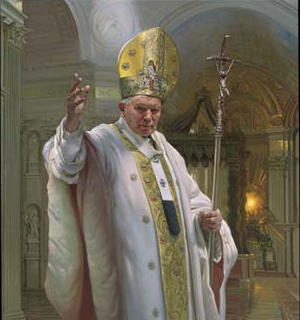
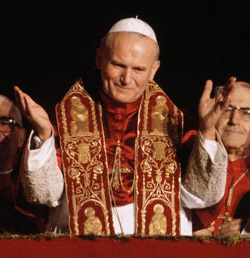
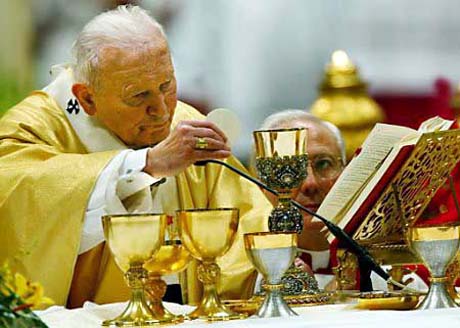
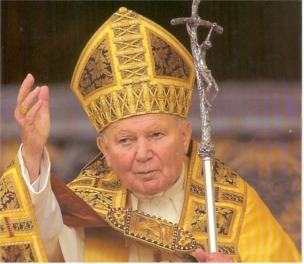






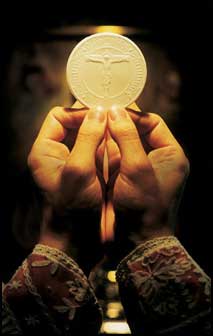
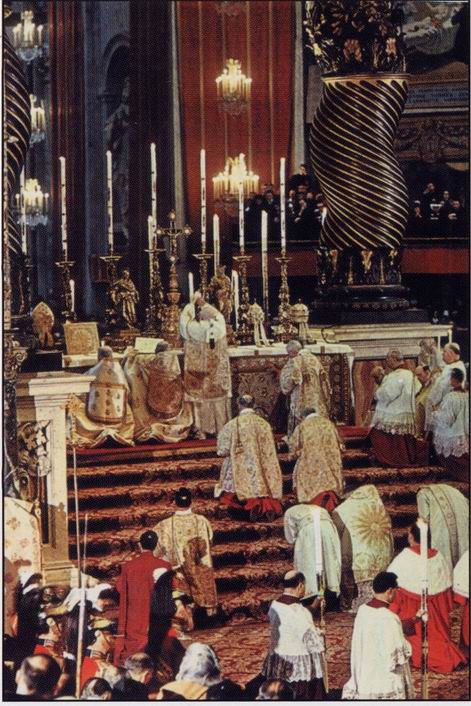



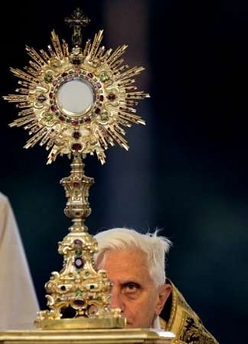







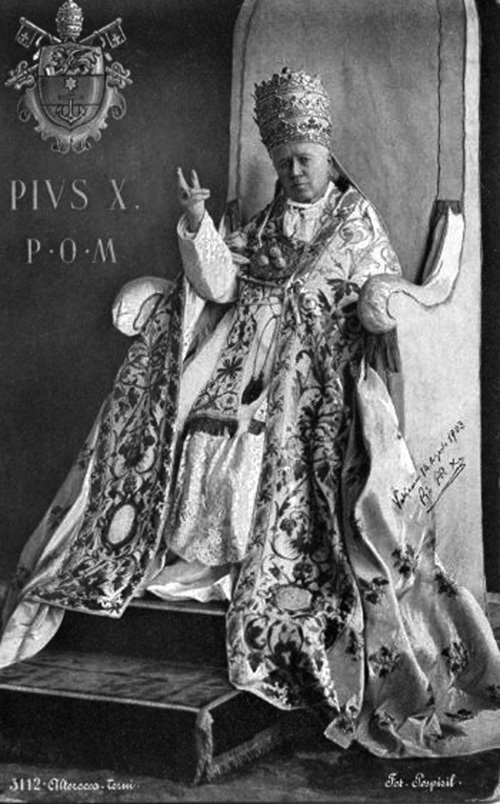










9 comments:
Thanks for your replies Andrew. Regarding the usage of Forms 1 and 2 for the Veneration on Good Friday. You're not actually alone on this. Westminster Cathedral under Mgr Langham too employs this particular usage of unveiling the cross.
I've just read the post regarding genuflection and I'm sorry to hear of that. I didn't realise that the majority of priests in Malaysia don't genuflect at the Consecration and the Ecce Agnus Dei. Here in Brunei every priest I know does - even the most liturgically progressive will mention before the Creed at Christmas and the Annunciation that the people should genuflect at the appropriate points, and the same goes for the UK as well (although to be fair I do hang out at the more traditional places in the UK) I do have a small suggestion as to how the servers can get round this, but I'll save it for a later post - I'm flying back to the UK now.
thanks for taking my points.
you mentioned fr. anscar chupungco, osb. he is a filipino. and he is a very well known liturgist here. he will be giving a seminar about 'blessings and sacramentals' this next week.
let me give you my own list in my library.
-sacramentary (complentary volume: collection of masses of the blessed virgin mary)
-lectionary (complementary volumes: book of gospels, collection of masses of the BVM:lectionary
-of course the bible in an attractive binding.
-book of blessings
-liturgy of the hours (complementary volumes: christian prayer, shorter christian prayer)
-roman ritual (i think we call it here collectio rituum)
-caeremoniale episcoporum
i still don't have a roman pontifical.
if you wish i can send you some picture of our my parish church. God bless!
Though the Rev. Fr. Anscar Chupungco O.S.B.is considered an "expert" in liturgy, if you wish to go "traditional", i.e. FOLLOW the NORMS of the HOLY SEE, then don't follow every word that Chupungco says.
He has publicly decalred that the Extraordinary Form of the Roman Rite is "bad"
Next comment box...
REVIEWS AND REFLECTIONS
Anscar J. Chupungco, O.S.B.
LITURGIAM AUTHENTICAM AND INCULTURATION
Anscar Chupungco, O.S.B. is rector of San Beda College, Manila. He served as rector of the Pontifical Athenaeum of S. Anselmo, president of the Pontifical Liturgical Institute, consultor to the Vatican Congregation for Catholic Education, member of the advisory committee of the International Commission on English in Liturgy, Chairperson of its Translations and Revisions Subcommittee and Executive Secretary of the Episcopal Commission on Liturgy. His publications include Handbook for Liturgical Studies in five volumes, Shaping the Easter Feast and Worship: Progress and Tradition.
Introduction
Liturgiam authenticam (March 28, 2001) is one of those rare Vatican documents that entirely ignore their predecessors. It is de rigueur for Vatican documents to do homage to preceding ones. Such a practice creates a sense of organic unity among the Acts of the Holy See. However, nowhere does this Fifth Instruction mention, much less give credit, to its predecessor Comme le prevoit, the Instruction that the Consilium issued in 1969 as guide to the translation of liturgical texts.
Several years ago, when the new Instruction was being planned, a minor official of the Congregation "indiscreetly, " that is unofficially, informed me that the Holy See had actually never considered the 1969 Instruction an official document. That probably explains why it did not merit being a player in the new Instruction. But how do we explain away the embarrassment of having translations made into major languages for over thirty years on the basis of an unofficial document? Why did it take the Holy See such a lengthy span of time to address an issue of such magnitude as liturgical translation? Liturgiam authenticam (no. 6) does not mince its words when it speaks of "omissions or errors, which affect certain existing vernacular translations" on the basis of the 1969 Instruction. I often wonder why the Holy See approved such translations in the first place, allowing them ironically to become an integral part of the local church's lex orandi, lex credende.
Translation is a Form of Inculturation
In a sense Liturgiam authenticam can be regarded as a sequel to the Fourth Instruction, which deals with the question of liturgical inculturation. Translation is in reality a type, perhaps the most significant type, of inculturation. What in fact is liturgical inculturation but the dynamic translation of the cultural components of the Roman Rite into the equivalent cultural components of the local church? Strictly speaking, liturgical inculturation is not absolute creativity. It is basically a work of translation through dynamic equivalence. Although Liturgiam authenticam is rather shaky on several issues, it hits a bull's eye when it affirms: “the work of inculturation, of which the translation into the vernacular languages is a part, is not therefore to be considered an avenue for the creation of new varieties of families of rites" (no. 5). The basic question we need to ask is what type of translation is it talking about?
Not every method of translation falls under the category of inculturation. Today linguists speak of two methods, namely formal correspondence and dynamic equivalence. It appears to me that Liturgiam authenticam leans heavily on formal correspondence, as it subtly warns against the dangers of dynamic equivalence. Formal correspondence is what we commonly call word‑for‑word translation. In its obsession for lexical accuracy and verbal fidelity to the original text, the method of formal correspondence ignores the culture of the recipient or the people for whom translation is made. Because formal correspondence does not bother about the cultural situation of the recipient, it cannot be considered a form of inculturation.
Dynamic equivalence, on the other hand, aims to transmit the message of the original text to the recipient by using the equivalent linguistic components with which he or she is familiar. Whenever feasible, this type of translation makes use of value words, idiomatic expressions, proverbs, and local images in an effort to embody the original message in the culture of the recipient. For this reason, dynamic equivalence can be considered a creative endeavor, although it is not a creative innovation that results in a new liturgical rite apart from the Roman Rite. Liturgiam authenticam sees danger in dynamic equivalence. This method can eventually distance the translated text from the original to the point that the original Latin text is no longer recognizable in the translation. It seems to me that what Liturgiam authenticam wants to happen is this: if the translated text is to be rendered back to the original language, which is Latin, every word can be
retrieved and accounted for.
But we know that the chief interest of translators who use the method of dynamic equivalence is not to answer for each individual word, sentence structure, and rhetorical expression but to communicate the message of the original text. Part of this is the concern to help the recipients grasp the message in their own cultural context, in the same way as the recipients of the original text understood the message in their cultural milieu. Dynamic equivalence is concerned with the message and the people to whom the message is addressed rather than the individual Latin words and phrases.
How does Liturgiam authenticam understand liturgical translation? The answer can be gathered from some of the statements it makes: "The translation of the liturgical texts of the Roman liturgy is not so much a work of creative innovation as it is of rendering the original texts faithfully and accurately into the vernacular language†(no. 20). I find it easy to agree with this statement, but not with its explanation. Although Liturgiam authenticam permits the arrangement of the wording, the syntax, and the style of the translation for the sake of flow and rhythm, it insists that "the original text, insofar as possible, must be translated integrally and in the most exact manner, without omissions or additions in terms of their content, and without paraphrases or glosses. Any adaptation to the characteristics or the nature of various vernacular languages is to be sober and discreet" (no. 22).
Liturgiam authenticam bombards us here with such words and phrases as “faithfully,†“accurately,†“integrally,†“in the most exact manner,†"without omissions or additions," and "without paraphrases or glosses." In short, what Liturgiam authenticam requires is formal correspondence. History, however, tells us otherwise. This was not the way the Roman Rite handled the materials it received from the people's culture and other liturgical traditions. For example, the Roman liturgical orations, especially during the classical period, paraphrased the Scripture in order to respect the requirements of such Latin rhetorical devices as the cursus. It often takes a profoundly biblical mind to perceive the words of Scripture in those prayers.
Liturgiam authenticam warns us that "the adaptations of the texts" should not be an excuse for "supplementing or changing the theological content" of the Latin typical edition. In other words, there is no room for enriching or contextualizing the doctrine conveyed in the original texts. Consequently, there is no chance that the liturgical prayers of local churches will grow in theology, spirituality, and pastoral concern. The orations the popes wrote for their people in the fifth and sixth centuries are what we must pray today without supplement or change. All this reveals a stifling predilection for formal correspondence and hence Liturgiam authenticam' s debatable definition of inculturation. Perhaps, this explains the prohibition to translate from translations made into other languages: "New translations must be made directly from the original texts, namely the Latin, as regards the texts of ecclesiastical composition" (no. 24). As an aside, I foresee
several local churches without translated texts for lack of medieval Latinists.
Even more disenchanting is the suggestion to retain “a certain manner of speech which has come to be considered somewhat obsolete in daily usage†(no. 27). This suggestion is prefaced by a caution to avoid "excessively unusual or awkward" expressions that hinder comprehension. The adverb "excessively" says it all! Liturgiam authenticam allows us to use unusual or awkward expressions, as long as we do not exaggerate. On the other hand, we are told that the work of translation “should be free of an overly servile adherence to prevailing modes of expression.†Liturgiam authenticam further argues that words or expressions, "which differ somewhat from usual and everyday speech" become truly memorable and capable of expressing heavenly realities.
Norms such as these can originate only in a soul that still struggles between the sacred and the profane. Why permit the use of the unusual or awkward and of somewhat obsolete words? The answer of Liturgiam authenticam is steeped in Roman pragmatism: To "free the liturgy from the necessity of frequent revisions when modes of expression may have passed out of popular usage." The thinking here is, the less we touch or tinker with the liturgy, the more secure its deposit of faith will be.
The principle regarding the use of what is obsolete is further developed by the term "sacral vernacular." What does it mean? Liturgiam authenticam (nos. 47‑50) defines it as worship language that "differs somewhat from ordinary speech"; it is "characterized by a vocabulary, syntax and grammar that are proper to divine worship." My question is why say "sacral", when there is a more suitable word, namely "liturgical" ? The use of "sacral" belies the agenda to save the liturgy from the false perception that it has become secular. Or perhaps it is a reaction to the existing English translation of the Roman liturgy that minimized or dropped the use of "sacred" before such words as ministers, vessels, furnishings, and vesture, or substituted cup for chalice, plate for paten, and so on. Liturgiam authenticam instructs the translator to keep the distinction of sacred persons and things pertaining to everyday life and usage.†The dichotomy between the sacred
and the profane is nowhere as firmly established as here.
But what if the assembly understands little or nothing of what is proclaimed in liturgical prayer because of the latter's obsolete expression? Liturgiam authenticam (no. 29) has a ready answer for it: "It is the task of the homily and of catechesis to set forth the meaning of the liturgical texts." What happens to Vatican II's program of active participation, which means that the assembly, including children, should understand the liturgical texts while they are proclaimed? As a rule of thumb, a good test for the suitability of a liturgical text is that it needs little or no explanation. The homily and catechesis should deepen the assembly's comprehension, but not set forth the meaning of a translated text that is obscure. At any rate, what assurance do we have that the homilist and catechist correctly interpret the liturgical text?
Conclusion
A Filipino proverb says: Ang hindi lumingon sa pinanggalingan, hindi makararating sa paroroonan (one who doesn't look back to the past cannot reach one’s destination) . Liturgiam authenticam set out on its momentous journey, completely ignoring its 1969 predecessor. It evidently lacks the pastoral insight of a document that bathed in the enthusiasm and vitality of the council. It does not build on the past. On the contrary, it ignores the wisdom and positive qualities of its predecessor. It only points out where the errors lie. It is not a document that will be remembered for its vision of what the worshiping community should be in the third millennium. Rather, it will be remembered as a reactionary statement that belonged more to the 19th century, which some historians have described as "a century without grace."
This may be viewed @:
http://eapi. admu.edu. ph/eapr002/ anscar.htm\
Anscar Chupungco has the distinction of being the only Filipino ever to become rector of a Pontifical University in Rome, that of San Anselmo. He is also acknowledged as the father of inculturation, and in that respect he has been the Philippines' prime contribution to the destruction of Catholic liturgy on an international scale since the 1970's.
However, some still have doubts as to the heterodoxy of Anscar Chupungco. Let us then examine his 2002 reflection for the Ateneo in which he publicly denounces Liturgiam Authenticam, the 2001 instruction of the Holy See which calls for better and more literal liturgical translations.
Isn't it so nice: Filipino theologians thinking that they are better than the Holy See! Indeed! We're the third largest Catholic community in the world but our contribution to international theological discourse is shamefully miniscule. And our already miniscule contribution is mainly on the side of heresy and dissent {the hall of shame includes: Jose de Mesa, Mary John Mananzan, Anscar Chupungco, and others who it won't be very prudent for me to name here}.
Internationally- renowned Filipino theologians who are totally orthodox are extremely rare {I can think only of Fr. Joselito Alviar Jose in Navarre and Fr.Edgardo Arellano, who is a prolific writer rather than a theologian}. Btw, I'm not counting the American, Belgian and Spanish theologians who {still!} dominate Philippine theology.
Very interesting is his statement that even children should be able to understand the liturgy without much explanation. Perhaps this attitude on the part of the Philippine liturgical establishment explains why the Philippines has the distinction of being the only nation to completely substitute the Apostles Creed {which, in other countries, is only for Children's Masses} for the Nicene Creed. Not to speak of the childishness in so many of our churches and in so many homilies.
These, however, are not surprising, given that Fr. Chupungco fathered the utterly heterodox Misa ng Bayang Pilipino for which the CBCP, in a monumental lapse of theological prudence {illustrating that the CBCP does NOT enjoy ANY kind of infallibility} , tried to get Vatican approval as the particular rite of the Philippines in 1976.
Guess what: the Vatican refused.
Reading through the Misa ng Bayang Pilipino, one can quickly note the following examples (NOT an exhaustive list) of heteropraxis and heterodoxy:
1) Abolition of Kyrie and Gloria (the latter is only an option, and can be used only for major feasts).
2) Instead of the priest giving the cruciform blessing with his hand, he waves in the air a large sign of the cross using a processional cross. Not only does it look funny, one has to ask why the priest does not give the blessing in the traditional way (with his right hand). Is it because the priest is not seen as persona Christi?
3) Instead of blessing the lector with the sign of the cross, the priest gives his hand for the lector to do the mano (which, let it not be forgotten, is a SECULAR sign and not a religious one)
4) The Liturgy of the Eucharist / Mass of the Faithful is referred to solely as Remembrance of the Last Supper. The theoretical basis of the Misa ng Bayang Pilipno"= makes it clear that the Mass is primarily to be seen as a fiesta and a community meal. I don't think I ever saw a single reference in the notes to the Holy Sacrifice of the Mass.
5) Abolition of the priest's genuflection after consecrating the bread and wine into the Body and Blood of our Lord. (What! No adoration by the priest of the consecrated elements?!)
6) The words of consecration, contrary to tradition, are not printed apart or in a distinguished manner that points to their unique significance, as the words by which the transformation of bread and wine into the Body and Blood of Our Lord are signified. Instead, they are just integrated into the text of the Eucharistic Prayer.
6) Repeated references in the rubrics to the consecrated host as bread and to the Blood of Our Lord as cup (not even chalice....)
Very Protestant, I say.
It is interesting to note a speech given by Anscar Chupungco to a group of Lutheran liturgists (http://www.valpo. edu/ils/chupungc o1.pdf) in which he talks with gratification about being called an honorary Lutheran and about his involvement in reforming the Lutheran liturgy (!), and in which he criticizes Rome for
a) not having heeded Martin Luther's call for liturgical reform in the 1500's and
b) for not approving his Misa ng Bayang Pilpino.
By the way, this guy continues to be the head of liturgy for the whole Philippines, thanks to CBCP. As long as he's around there is no way we can expect our extremely shabby liturgical praxis to improve.
Hi Andrew!
Would you please contact me again? I accidentally deleted your comment and need to talk with you.
Thank you!
Ola, what's up amigos? :)
Hope to receive any help from you if I will have any quesitons.
Thanks and good luck everyone! ;)
good afternoonpeople this is a great forum hope im welcome :)
Post a Comment